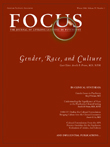Race/Ethnicity Among Psychiatric Patients: Variations in Diagnostic and Clinical Characteristics Reported by Practicing Clinicians
Abstract
Objective: The authors examined racial/ethnic variations in psychiatric diagnoses and clinical characteristics of psychiatric patients as assessed and reported by psychiatrists in routine clinical practice. Method: A national sample of psychiatrists provided detailed clinical data on 2,561 adult patients they treated in their routine practice settings. African American (n=254) and Hispanic patients (n=149) were compared with non-Hispanic white patients (n=2,158). Logistic regression analysis was used to assess racial/ethnic differences in diagnosis after adjustment for sociodemographic and care setting/payment characteristics. Results: African American patients were more likely to receive a diagnosis of a schizophrenia spectrum disorder or a nonalcohol substance use disorder and less likely to receive a diagnosis of a depressive or anxiety disorder, compared with white patients. After adjusting for sociodemographic and care setting/payment factors, differences in rates of schizophrenia spectrum disorders were no longer statistically significant; African Americans also remained more likely to be diagnosed as having a nonalcohol substance use disorder (odds ratio=1.8, 95% CI=1.09–3.03); and African American men remained less likely than white men to be diagnosed as having bipolar disorder (odds ratio=0.26, 95% CI=0.09–0.80) or anxiety disorders (odds ratio=0.35, 95% CI=0.14–0.85). No differences in adjusted rates of schizophrenia, depression, bipolar, or anxiety disorders were observed for Hispanic patients compared with white patients. Conclusions: Psychometric validation of patients’ diagnoses and current symptoms is needed to understand the extent to which these observed racial/ethnic differences in diagnoses may reflect differential patterns of detection in routine psychiatric practice.



